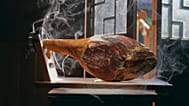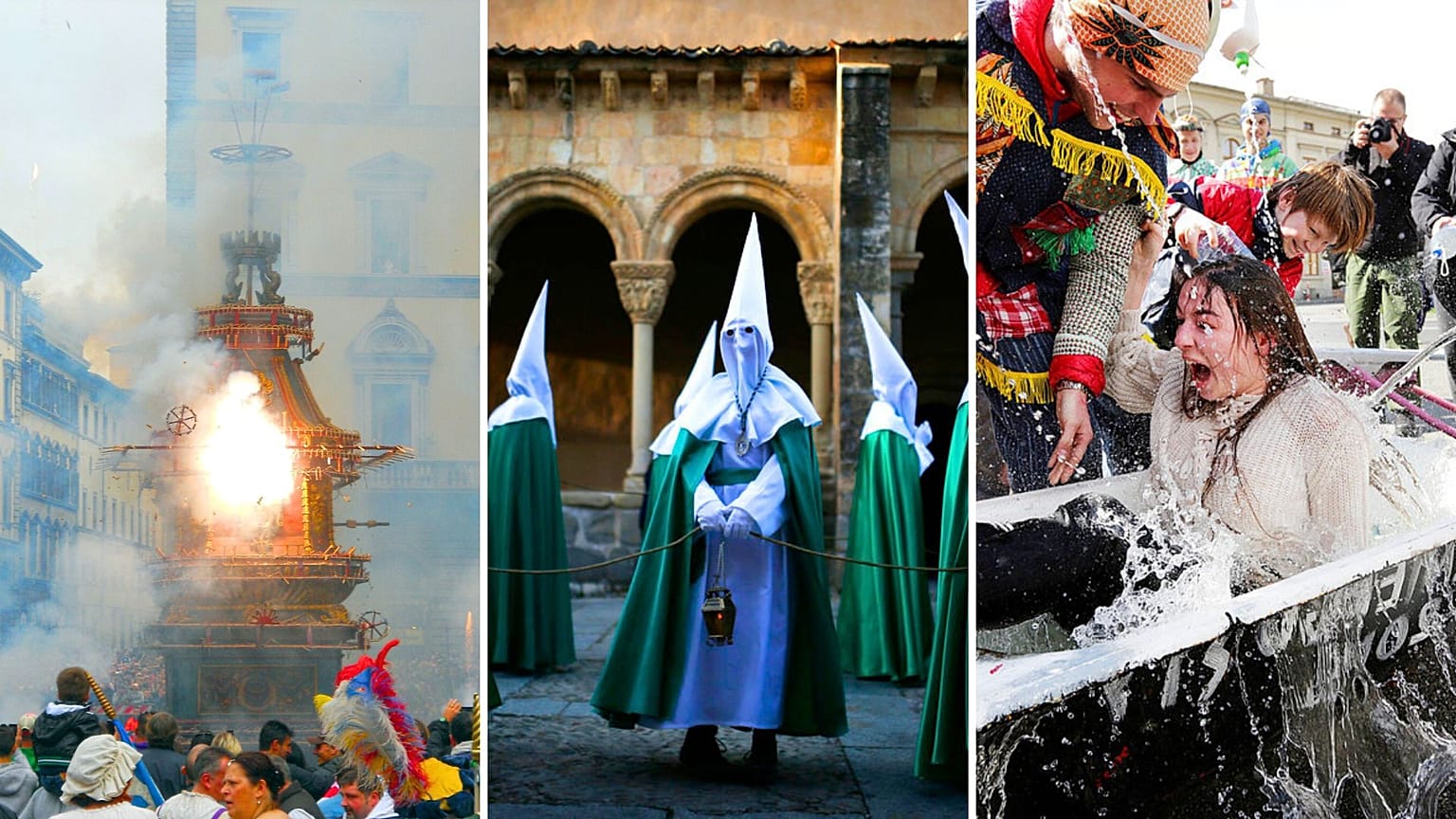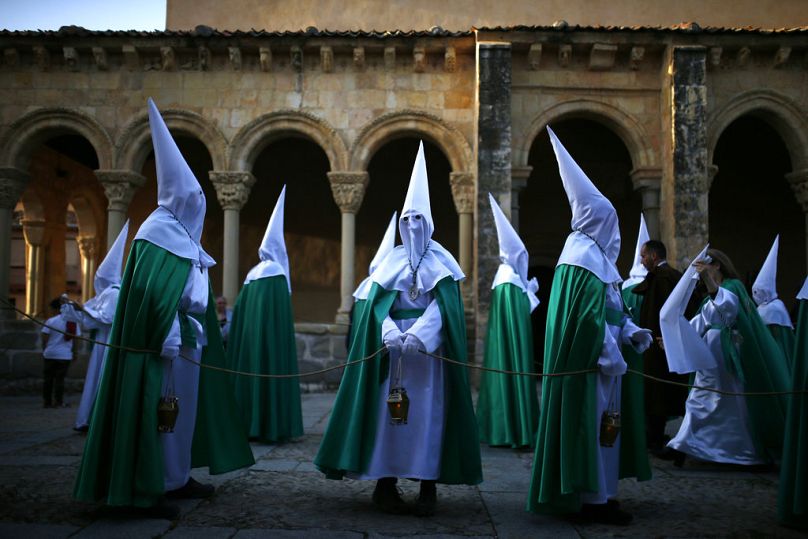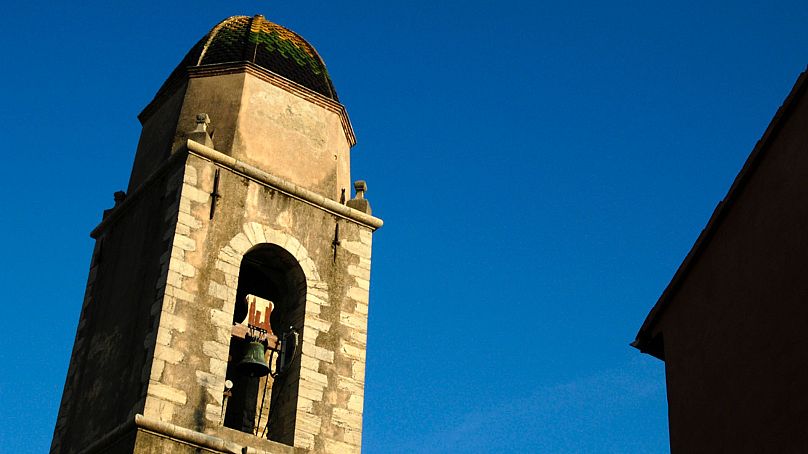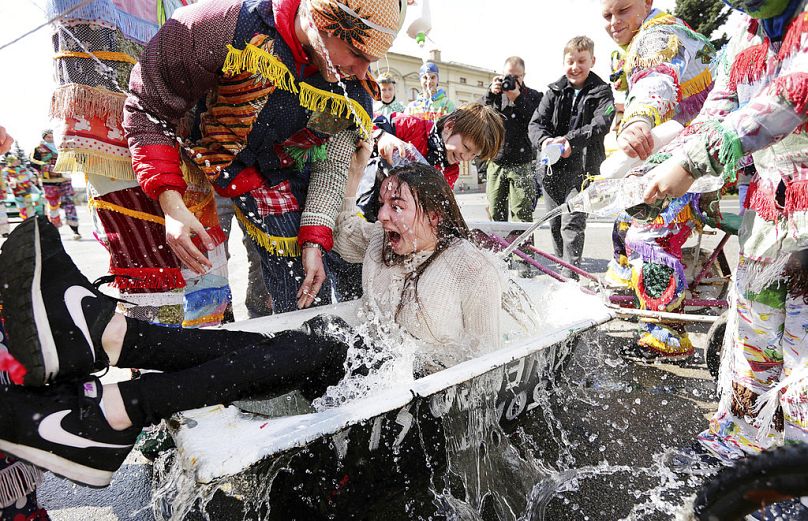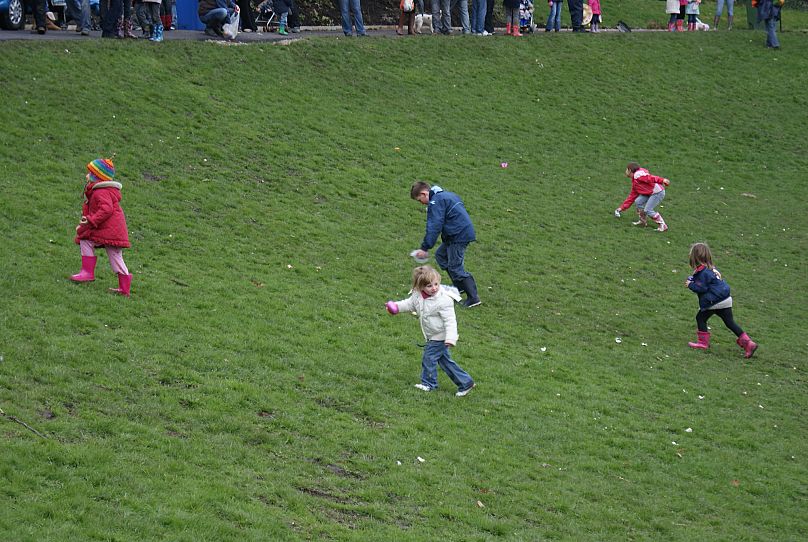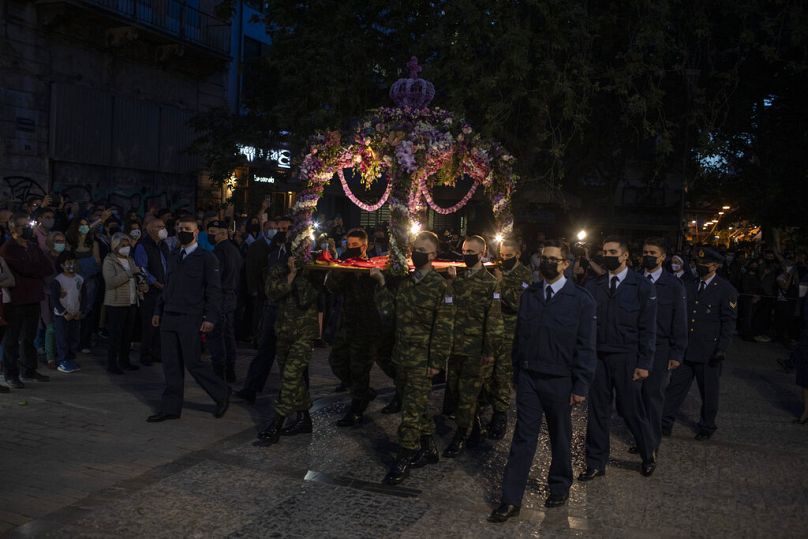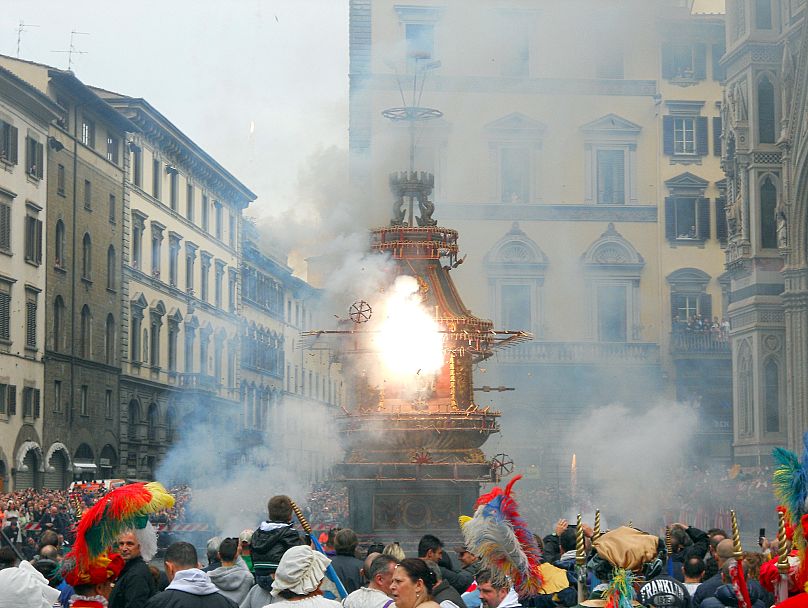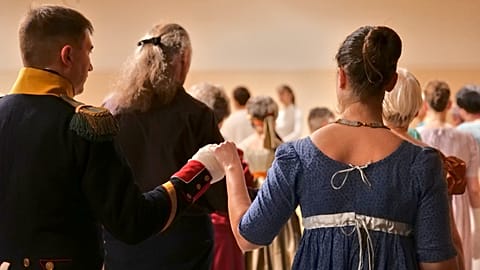Easter isn’t just about bunnies, chocolate and singing hymns – these European traditions infuse the holiday with legends, competition, and even crime drama.
In some countries, it's a bigger deal even than Christmas.
Easter is a highlight of the Christian calendar. From solemn processions and water fights to TV marathons, Europe is home to some unique Easter traditions – some spiritual and some… less so.
If you’re wondering how to get in the Easter spirit, take inspiration from a trip around the continent with Euronews Culture.
Watch elaborate Semana Santa parades in Spain
Get a move on, celebrations have already started in Spain – Semana Santa (Holy Week) events take place across the entire last week of Lent. Along with treats such as French toast-eque torrijas and mona de Pascua cake, parades are a seasonal staple. Catholic religious brotherhoods – recognisable for their distinctive cloaks and hoods – perform penance processions on the streets of many Spanish cities, with pasos (floats) depicting scenes from the biblical Easter story. Seville is famed for hosting some of Spain's most elaborate processions, but Madrid, Zamora, Valladolid and Granada are also hotspots for anyone wanting to experience Semana Santa.
Experience the silence of the bells in France
Move over Easter Bunny – in France, it’s the cloches volantes or “flying bells” that bring excited children their Easter treats.
Church bells stop ringing around Easter as a sign of respect for Jesus's death, because – so the story goes – they have flown to Rome to be blessed by the Pope, before making a glorious return fully loaded with Easter eggs. On the journey back to their steeples, the bells drop their bounty into families’ gardens, ready for competitive Easter egg hunts to get underway.
Prefer your eggs of the savoury variety? Head to the town of Bessières in southwest France, where Easter Monday sees thousands gather to enjoy a 15,000-egg omelette.
Take aim in Poland’s Easter water fight
Nothing says Easter like aiming a water pistol at your neighbours. At least, that’s the case in Poland, where Śmigus-Dyngus – also known as lany poniedziałek (Wet Monday) – turns Easter Monday into a full-blown national water fight.
It’s thought that the tradition goes back to the 14th century, when boys in countryside villages would drench girls with buckets of water as a sign of affections (as questionable as their methods may sound). These days, though, nobody is safe: watch out for sniper-style water balloons from above when walking the streets of Polish cities, attacks by water gun-wielding schoolchildren and even from the hoses of hardworking firefighters.
Similar water-based traditions can be found all around Central and Eastern Europe, but Poland takes the festivities to a new level.
Try your hand at egg rolling in the UK
Why just admire your elaborately decorated egg when you could roll it down a hill? Infuse your Easter with a healthy dose of competition in this centuries-old UK custom, which sees enthusiasts (traditionally children, but why let them have all the fun?) compete to roll their egg the furthest without it breaking.
Egg rolling, which is meant to symbolise the stone at the entrance to Jesus’s tomb being rolled away, is also known as “pace-egging”, derived from “Pasch” in Old English which, in turn, comes from the Hebrew for Passover (Pesach).
Among the most famous egg rolling events usually takes place at Preston’s Avenham Park on Easter Monday, and this year is no exception.
Follow the Epitaphios in Greece
As Eastern Orthodox churches use a different calendar from Catholic and Protestant churches to work out what day Easter should fall on, Greece (along with other countries such as Bulgaria) will celebrate Easter this year on 5 May.
The sombre procession of the Epitaphios – a recreation of the tomb of Christ, often decorated with flowers – is a staple of Good Friday, before staying up for the midnight mass that ushers in Easter Sunday. Other non-negotiables include preparing colourful dyed eggs, and tucking into roast lamb and tsoureki (sweet easter bread).
Enjoy an explosive tradition in Florence, Italy
Visitors to Florence might usually have Michelangelo’s David and the Ponte Vecchio on their hitlists, but Easter offers another, more unusual spectacle: the Scoppio del Carro.
Meaning the "explosion of the cart", the Scoppio del Carro is not for the faint of heart. It has its origins in the First Crusade, when the Florentine Pazzino de' Pazzi – according to legend, at least – became the first man to scale the walls of Jerusalem, taking stone pieces from the Holy Sepulchre back to Florence, which were used to spark the Easter bonfire, carried around Florence in a cart to bring blessing to the city
Today, the Easter Sunday event centres around a mammoth antique chariot packed full of fireworks, wheeled onto Duomo Square and set alight with a dove-shaped rocket called a colombina.
The "brindellone" chariot used today dates back to the 17th century and was designed by the architect and stage designer Bernardo Buontalenti.
Binge watch crime drama in Norway
You’ve heard of Scandi noir, but how about adding some into your Easter celebrations?
During the Easter holidays, many Norwegians retreat to mountain and countryside cabins, with the country largely shutting down over the five-day break. Enter the beloved Easter tradition: Påskekrim, or “Easter crime”.
With the weather still chilly in much of Norway, people often bed down for a few days with murder mystery novels or in front of their televisions, with TV schedules packed with crime shows at all hours and bookstores offering special promotions on crime novels. Festive, eh?


